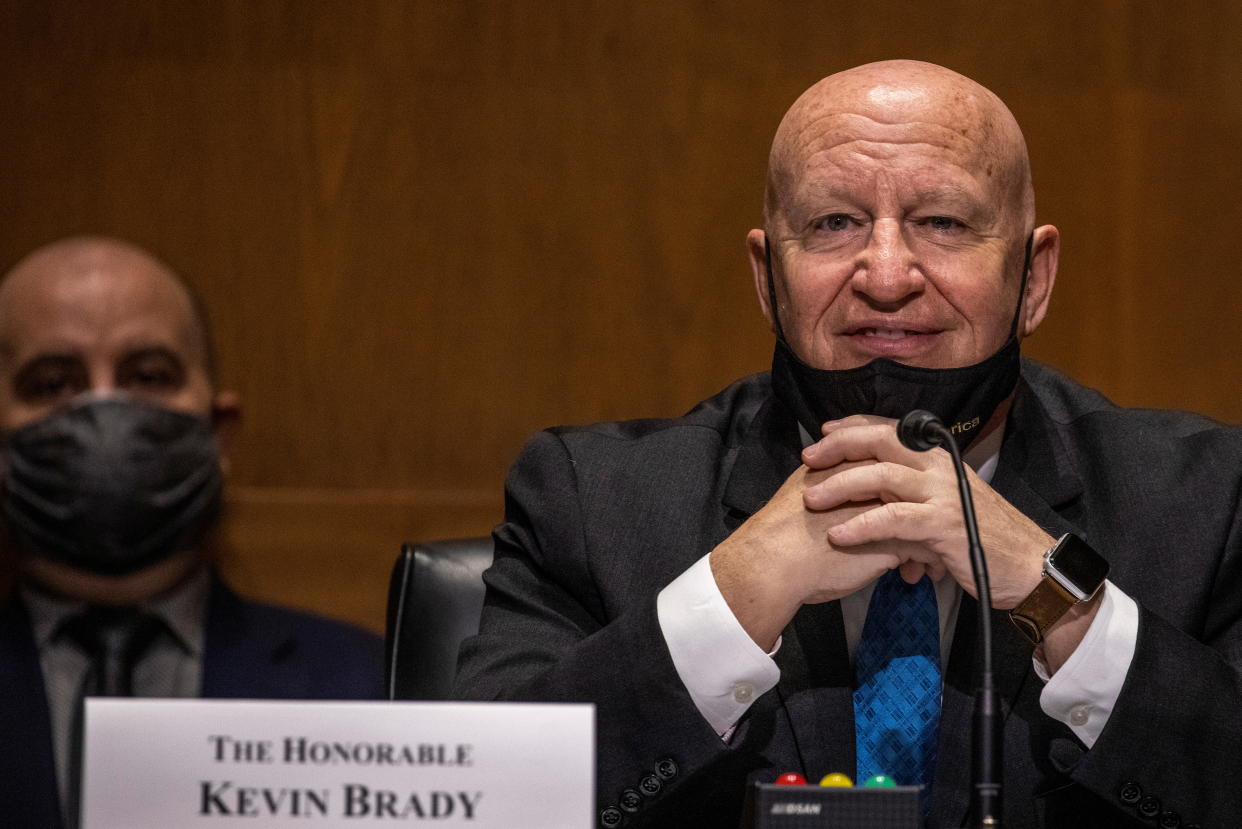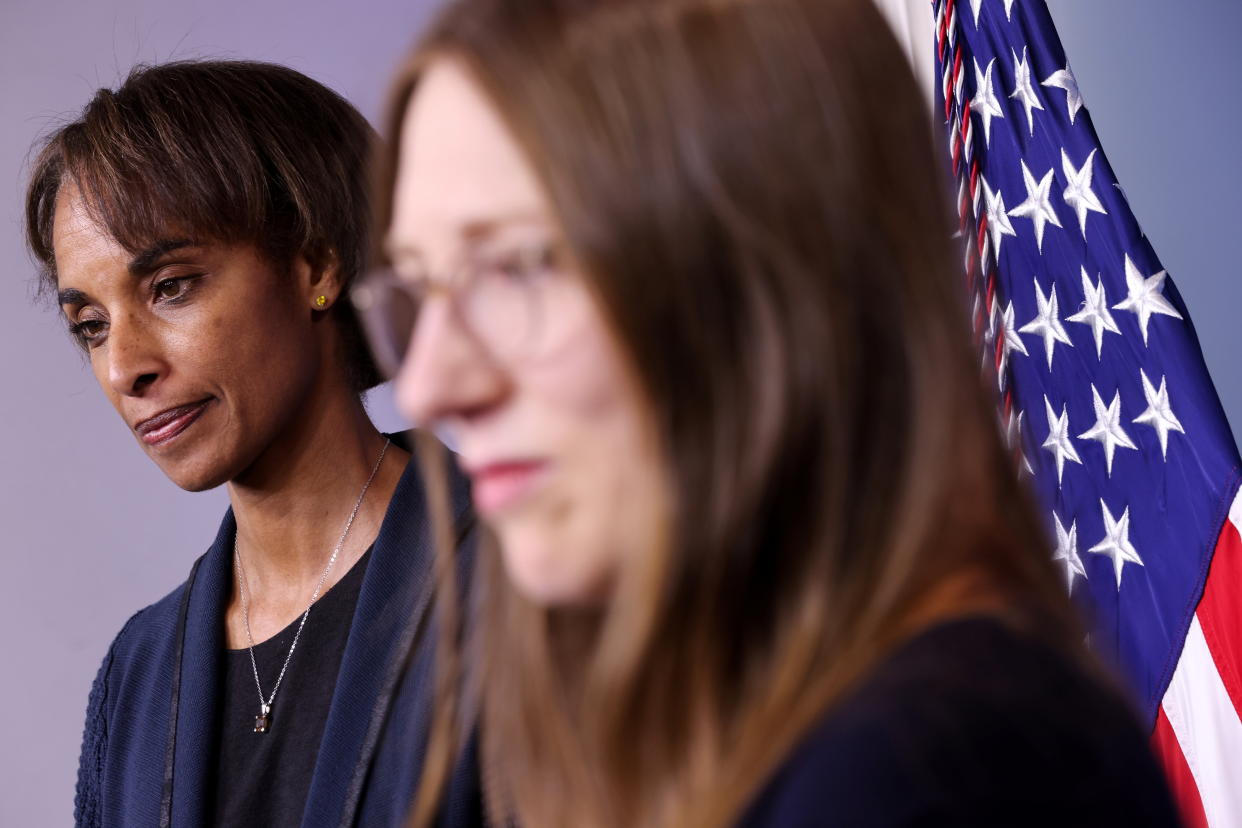This week in Bidenomics: The Republican recession
The economy is wobbly, and Republicans are loving it.
Economic output fell by 1.4% in the first quarter, surprising economists who expected modest GDP growth. Republicans saw it coming.
“The growing risk of a significant recession [is] the signature failure of the Biden administration," Rep. Kevin Brady of Texas, ranking member of the House Ways and Means Committee, said on Capitol Hill on April 28. “This is what happens when a president treasures his unpopular socialist agenda.”
GOP research group America First Policy Institute insists “the Biden recession is coming.” Conservative news site Breitbart declared, “Biden’s economy is the definition of stagflation.” “Conservatives could barely contain their glee when news broke that the U.S. economy contracted by 1.4%,” The Week observed.
Could Republicans be right? Does one weak GDP report mean we’re on the cusp of a recession?
Probably not. Last year ended with strong GDP growth of 6.9% in the fourth quarter. But the COVID Omicron variant surged at the end of 2021 and the beginning of this year, which kept people in and hurt growth. Russia’s Feb. 24 invasion of Ukraine and massive COVID lockdowns in China also messed up the numbers, via trade. U.S. exports fell in the first quarter, while imports rose. Since exports add to GDP while imports detract from it, that pushed GDP negative.

Most economists say the economic fundamentals remain solid. The unemployment rate remains close to record lows and demand for workers is still strong. Consumer spending, the main driver of economic growth, remains solid, one reason imports were so strong in the first quarter. Inflation is a drag, at 8.5%, but many consumers seem to have saved enough money during two years of COVID restraint to weather higher prices, for the time being.
“We think inflation risks are low for now,” Bank of America said in an April 29 research note.
Moody’s Analytics thinks some growth will shift from the first quarter to the second, as U.S. exports recover and COVID fatigue boosts spending. For the year, Moody’s Analytics sees real GDP growth of 3%, which means the next couple quarters will have to be higher than that to make up for the decline in the first quarter.
President Biden still has a considerable problem. After the release of the latest GDP report, Biden ticked off everything going right in the U.S. economy: strong spending and business investment, super-low unemployment, solid new-business formation. His deputies went on a media reassurance tour.
On Yahoo Finance, White House economist Heather Boushey said there’s “a lot of underlying strength and resiliency in this economic recovery.”
[Follow Rick Newman on Twitter, sign up for his newsletter or send in your thoughts.]
Noted. But voters aren’t going to give Biden credit for footnotes or future growth. They want inflation to fall, COVID to end and the economy to feel healthy. Not surprisingly, consumer confidence has been falling since last summer, when inflation started to surge. In the University of Michigan survey, confidence is lower now than during the scary and uncertain early days of the COVID pandemic. There was a modest pickup in April, but confidence remains mired at recession levels.

Voters, in other words, seem to buy the Republican narrative of a recession either underway or on the way. Even if that’s wrong, sentiment trumps reality at the voting booth. Biden’s weak approval rating, around 41%, indicates the very real risk of a Democratic smackdown in the November midterm elections.
There’s room for recovery. One of the most overlooked events of recent days is Dr. Anthony Fauci’s assertion that “we are certainly right now in this country out of the pandemic phase.” Fauci, the government’s top infectious disease specialist, amended that later, saying he meant the "acute" phase of the pandemic was over. Even that, however, is a victory and a tangible step back toward normalcy.
A lot of economists think inflation has peaked and could drift down during the rest of the year. But Russia’s war in Ukraine remains a dangerous wild card. Momentum is growing for a European embargo on Russian oil purchases, which could still push oil and gasoline prices much higher. Here in the United States, high gas prices have a disproportionate effect on consumer psyches, which helps explain why Americans are gloomier than necessary. Even if a new surge in prices is Russia’s fault, voter may take it out on Biden and his fellow Democrats. Republicans will be right there, telling them how bad everything is.
Rick Newman is the author of four books, including “Rebounders: How Winners Pivot from Setback to Success.” Follow him on Twitter: @rickjnewman. You can also send confidential tips.
Follow Yahoo Finance on Twitter, Instagram, YouTube, Facebook, Flipboard, and LinkedIn
